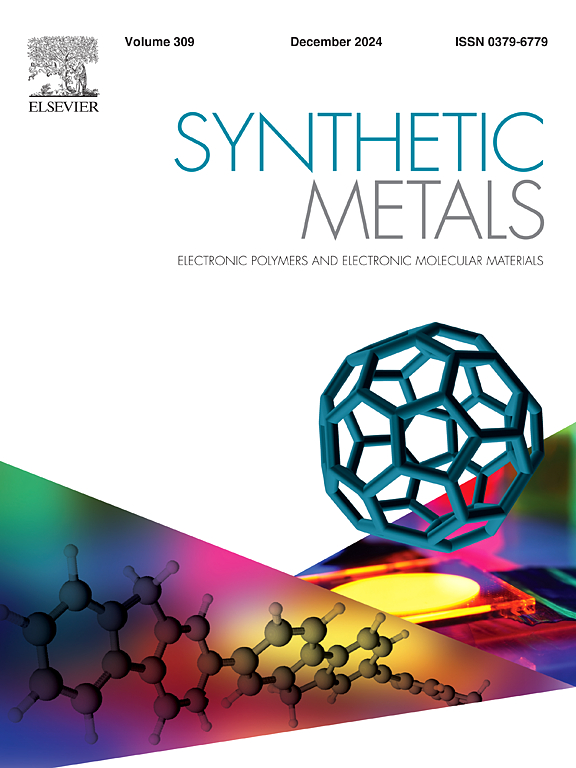通过优化空穴传输层来提高钙钛矿太阳能电池的效率和稳定性
IF 4
3区 材料科学
Q2 MATERIALS SCIENCE, MULTIDISCIPLINARY
引用次数: 0
摘要
钙钛矿太阳能电池(PSCs)由于其高效率和低制造成本而成为光伏领域的领先技术。然而,PSCs的性能和稳定性往往受到空穴传输层(HTLs)特性的限制。在本研究中,我们探索了使用酞菁钴(CoPc)和复合CoPc/Spiro-OMeTAD层作为HTLs来提高psc的效率和稳定性。AFM结构分析表明,CoPc/Spiro-OMeTAD复合层具有均匀、无针孔的表面形貌,这对于最小化电荷复合至关重要。光学研究表明,这些复合层在提供有效光吸收的同时保持高透明度。光电表征表明,具有CoPc/Spiro-OMeTAD HTLs的psc的功率转换效率(PCE)为18.7 %,优于标准Spiro-OMeTAD和单CoPc层的器件。此外,复合HTLs提高了PSCs的稳定性,在未封装的情况下运行300 小时后,PCE的保留率为84% %。阻抗谱分析表明,复合HTLs降低了器件的串联电阻和电荷转移电阻。这些发现表明,CoPc/Spiro-OMeTAD复合层是提高psc效率和稳定性的有希望的候选材料。本文章由计算机程序翻译,如有差异,请以英文原文为准。
Improving the efficiency and stability of perovskite solar cells through optimization of the hole-transport layer
Perovskite solar cells (PSCs) have emerged as a leading technology in the photovoltaic sector due to their high efficiency and low fabrication cost. However, the performance and stability of PSCs are often limited by the properties of hole transport layers (HTLs). In this study, we explore the use of cobalt phthalocyanine (CoPc) and a composite CoPc/Spiro-OMeTAD layer as HTLs to enhance the efficiency and stability of PSCs. Structural analysis via AFM revealed that the CoPc/Spiro-OMeTAD composite layer possesses a uniform, pinhole-free surface morphology, crucial for minimizing charge recombination. Optical studies demonstrated that these composite layers maintain high transparency while providing effective light absorption. Photoelectrical characterizations showed that PSCs with the CoPc/Spiro-OMeTAD HTLs achieved a power conversion efficiency (PCE) of 18.7 %, outperforming devices with standard Spiro-OMeTAD and single CoPc layers. Moreover, the composite HTLs improved the stability of the PSCs, retaining 84 % of the initial PCE after 300 hours of operation without encapsulation. Impedance spectroscopy indicated that the composite HTLs reduce series resistance and charge transfer resistance of the devices. These findings suggest that CoPc/Spiro-OMeTAD composite layers are promising candidates for enhancing both the efficiency and stability of PSCs.
求助全文
通过发布文献求助,成功后即可免费获取论文全文。
去求助
来源期刊

Synthetic Metals
工程技术-材料科学:综合
CiteScore
8.30
自引率
4.50%
发文量
189
审稿时长
33 days
期刊介绍:
This journal is an international medium for the rapid publication of original research papers, short communications and subject reviews dealing with research on and applications of electronic polymers and electronic molecular materials including novel carbon architectures. These functional materials have the properties of metals, semiconductors or magnets and are distinguishable from elemental and alloy/binary metals, semiconductors and magnets.
 求助内容:
求助内容: 应助结果提醒方式:
应助结果提醒方式:


